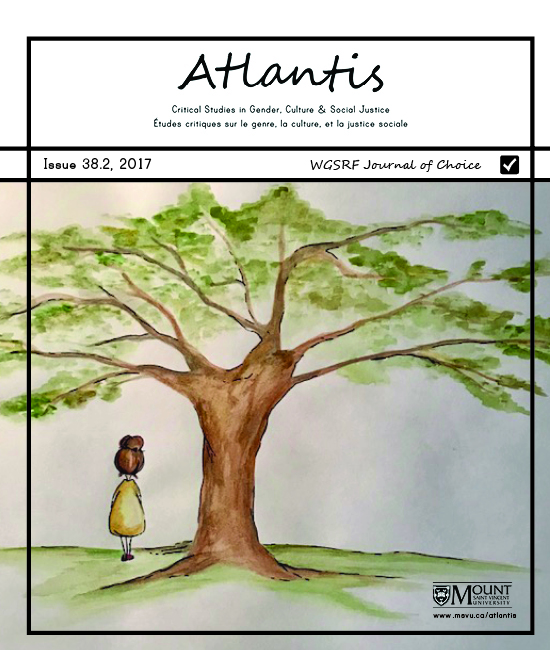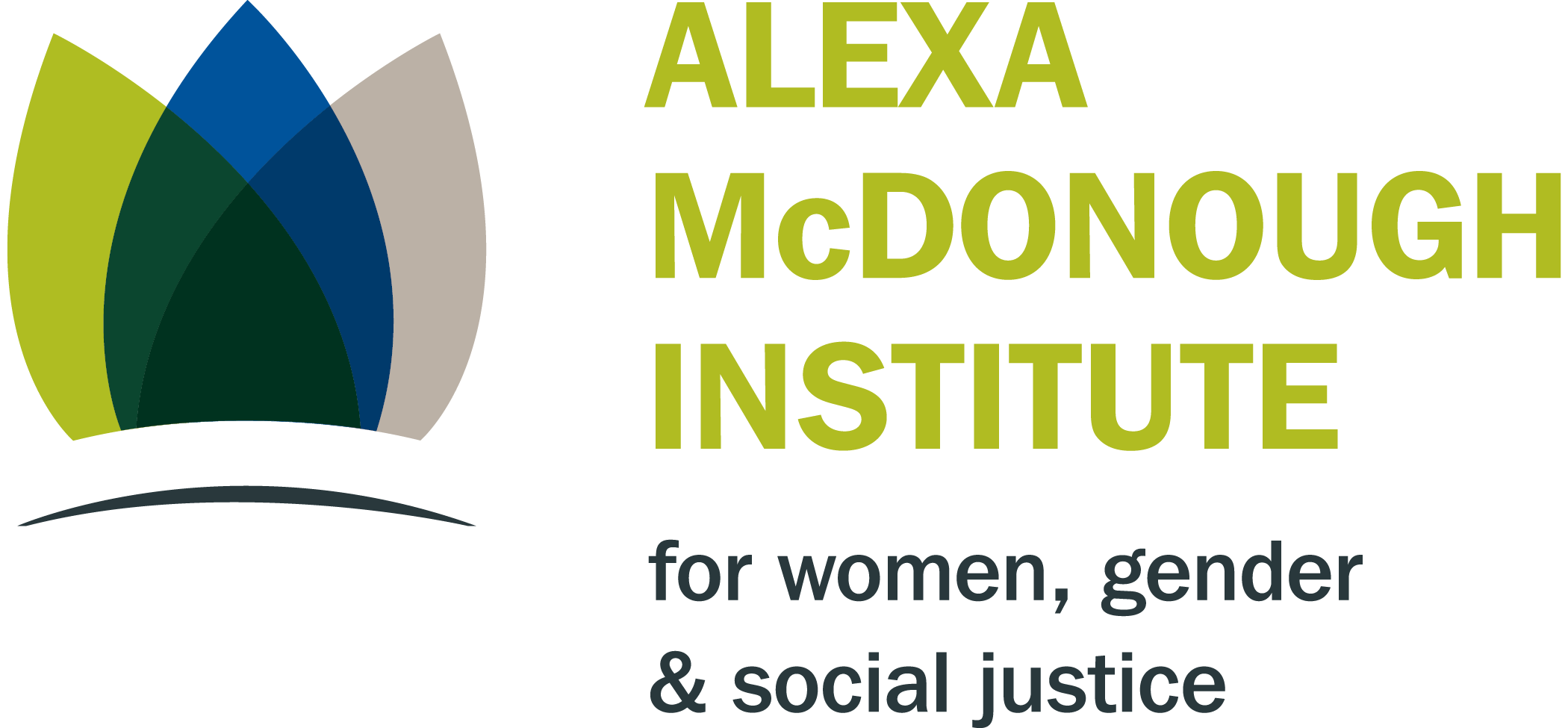Posthumanist Feminism and Interspecies Affect in Nalo Hopkinson’s Midnight Robber
Mots-clés :
Speculative fiction, posthumanist feminism, cyborgs, affectRésumé
Abstract
This paper examines the posthuman affective communities in Nalo Hopkinson’s dystopia Midnight Robber (2000), from an intersectional approach. It focuses on the interspecies affinity developed between a cyborg Black girl and other posthuman beings in outer space, where subaltern ‘artisans,’ machines, and indigenous communities provide nurturing affects of love and compassion that engender mutual respect and solidarity.
Résumé
Cet article examine les communautés affectives posthumaines dans la dystopie Midnight Robber (2000) de Nalo Hopkinson, selon une approche intersectionnelle. Il met l’accent sur l’affinité interspécifique qui se développe entre une cyborg noire et d’autres êtres posthumains dans l’espace, où des « artisans » subalternes, des machines et des communautés indigènes fournissent des affects enrichissants d’amour et de compassion qui engendrent le respect mutuel et la solidarité.
Références
Ahmed, Sara. 2000. Strange Encounters: Embodied Queers in Post-Coloniality. London, UK: Routledge.
Atwood, Margaret. 2011. In Other Worlds: SF and the Human Imagination. New York, NY: Nan A. Talese/Doubleday.
Barr, Marleen S., ed. 2008. Afro-Future Females: Black Writers Chart Science Fiction’s Newest New-Wave Trajectory. Columbus, OH: Ohio State University Press.
Boyle, Elizabeth. 2009. “Vanishing Bodies: ‘Race’ and Technology in Nalo Hopkinson’s Midnight Robber.” African Identities 7 (2): 177-191.
Braidotti, Rosi. 1994. Nomadic Subjects. New York, NY: Columbia University Press.
___. 2006. “Posthuman, All Too Human. Towards a New Process Ontology.” Theory Culture Society 23 (7-8): 197-208.
___. 2013. The Posthuman. London, UK: Polity.
Caluya, Gilbert. 2014. “Fragments for a Postcolonial Critique of the Anthropocene. Invasion Biology and Environmental Security.” In Rethinking Invasion Ecologies from the Environmental Humanities, edited by Jody Fwaley and Iain McCalman, 31-44. London, UK: Routledge.
Castells, Manuel. 1996. The Rise of the Network Society. Malden, MA: Blackwell.
___. 2000. “Materials for an Exploratory Theory of the Network Society.” British Journal of Sociology 51 (1): 5–24.
Dillon, Grace L. 2007. “Indigenous Scientific Literacies in Nalo Hopkinson’s Ceremonial Worlds.” Journal of the Fantastic in the Arts 18 (1): 23-41.
___. 2008. “Totemic Human-Animal Relationships in Recent Sf.” Extrapolation 49 (1): 70-96.
Dubey, Madhu. 2008. “Becoming Animal in Black Women’s Science Fiction.” In Afro-Future Females: Black Writers Chart Science Fiction’s Newest New-Wave Trajectory, edited by Marleen S. Barr, 31-51. Columbus, OH: Ohio State University Press.
Enteen, Jilliana. 2007. “‘On the Receiving End of the Colonization’: Nalo Hopkinson’s ’Nansi Web.” Science Fiction Studies 34 (2): 262-282.
Haraway, Donna. 1991a. “Situated Knowledges: The Science Question in Feminism and the Privilege of Partial Perspective.” In Simians, Cyborgs and Women: The Reinvention of Nature, by Donna Haraway, 183-201. New York, NY: Routledge.
____. 1991b. “A Cyborg Manifesto: Science, Technology, and Socialist-Feminism in the Late Twentieth Century.” In Simians, Cyborgs and Women: The Reinvention of Nature, by Donna Haraway, 149-181. New York, NY: Routledge.
_______. 1999. “The Promises of Monsters.” In Cybersexualities: A Reader on Feminist Theory, Cyborgs and Cyberspace, edited by Jenny Wolmark, 314-366. Edinburgh, UK: Edinburgh University Press.
Hardt, Michael, and Antonio Negri. 2004. Multitude: War and Democracy in the Age of Empire. New York, NY: Penguin.
Hayles, N. Katherine. 1999. “The Life Cycle of Cyborgs: Writing the Posthuman.” In Cybersexualities: A Reader on Feminist Theory, Cyborgs and Cyberspace, edited by Jenny Wolmark, 157-173. Edinburgh, UK: Edinburgh University Press.
Hopkinson, Nalo. 2000. Midnight Robber. New York, NY: Warner Books.
___. 2012. “Report from Planet Midnight.” In Report from Planet Midnight Plus…, by Nalo Hopkinson, 27-50. Oakland, CA: PM Press.
Kamboureli, Smaro, and Roy Miki, eds. 2007. Trans.Can.Lit: Resituating the Study of Canadian Literature. Waterloo, ON: Wilfrid Laurier University Press.
Knepper, Wendy. 2013. “Cross-Dressing and the Caribbean Imaginary in Nalo Hopkinson’s Midnight Robber.” In The Cross-Dressed Caribbean: Writing, Politics, Sexualities, edited by Maria Cristina Fumagalli, Bénédicte Ledent, and Roberto del Valle Alcalá, 140-156. Charlottesville, VA: University of Virginia Press.
Langer, Jessica. 2011. Postcolonialism and Science Fiction. Houndmills, UK: Palgrave Macmillan.
Mbembe, Achille. 2003. “Necropolitics.” Public Culture 15 (1): 11-40.
Nelson, Alondra. 2002a. “Introduction: Future Texts.” Afrofuturism. Social Text 71: 1-15.
___. 2002b. “Making the Impossible Possible. An Interview with Nalo Hopkinson.” Afrofuturism. Social Text 71: 97-113.
Pordzik, Ralph. 2001. The Quest for Postcolonial Utopia: A Comparative Introduction to the Utopian Novel in the New Literatures in English. New York, NY: Peter Lang.
Rutledge, Gregory E. 2001. “Futurist Fiction and Fantasy: The ‘Racial’ Establishment.” Callaloo 24 (1): 236-252.
Sandoval, Chela. 1999. “New Sciences: Cyborg Feminism and the Methodology of the Oppressed.” In Cybersexualities: A Reader on Feminist Theory, Cyborgs and Cyberspace, edited by Jenny Wolmark, 247-263. Edinburgh, UK: Edinburgh University Press.
Thaler, Ingrid. 2010. Black Atlantic Speculative Fictions: Octavia E. Butler, Jewelle Gomez, and Nalo Hopkinson. New York, NY: Routledge.
Thomsen, Mads Rosendahl. 2013. The New Human in Literature: Posthuman Visions of Changes in Body, Mind and Society after 1900. London, UK: Bloomsbury.
Wolfe, Cary. 2010. What is Posthumanism? Minneapolis, MN: University of Minnesota Press.
Téléchargements
Publié
Numéro
Rubrique
Licence
© Atlantis: Études critiques sur le genre, la culture, et la justice 2018

Cette œuvre est sous licence Creative Commons Attribution 4.0 International.
Les auteurs qui publient dans cette revue acceptent les conditions suivantes:
1. Les auteurs conservent les droits d’auteur et accordent le droit de première publication à la revue. L’œuvre est simultanément sous licence internationale Creative Commons Attribution 4.0 qui permet à d’autres personnes de la partager en citant dans les remerciements l’auteur de l’œuvre et sa publication initiale dans cette revue.
2. Les auteurs savent que les articles publiés dans Atlantis sont indexés et disponibles par le biais de divers outils de recherche universitaires et professionnels, y compris, entre autres, Erudit.
3. Les auteurs peuvent conclure des ententes contractuelles supplémentaires et distinctes pour la distribution non exclusive de la version de l’article publiée par la revue (c’est-à-dire, l’afficher dans un dépôt institutionnel ou la publier dans un livre), en signalant qu’elle a été initialement publiée dans cette revue.
4. Les auteurs sont autorisés et encouragés à prépublier leur œuvre, c’est-à-dire à la publier en ligne (dans un dépôt institutionnel ou sur leur site Web, par exemple) avant et pendant le processus de soumission. Cela peut conduire à des échanges productifs, ainsi qu’à ce que le travail publié soit cité plus tôt et plus souvent. Renseignez-vous davantage ici sur la prépublication.







